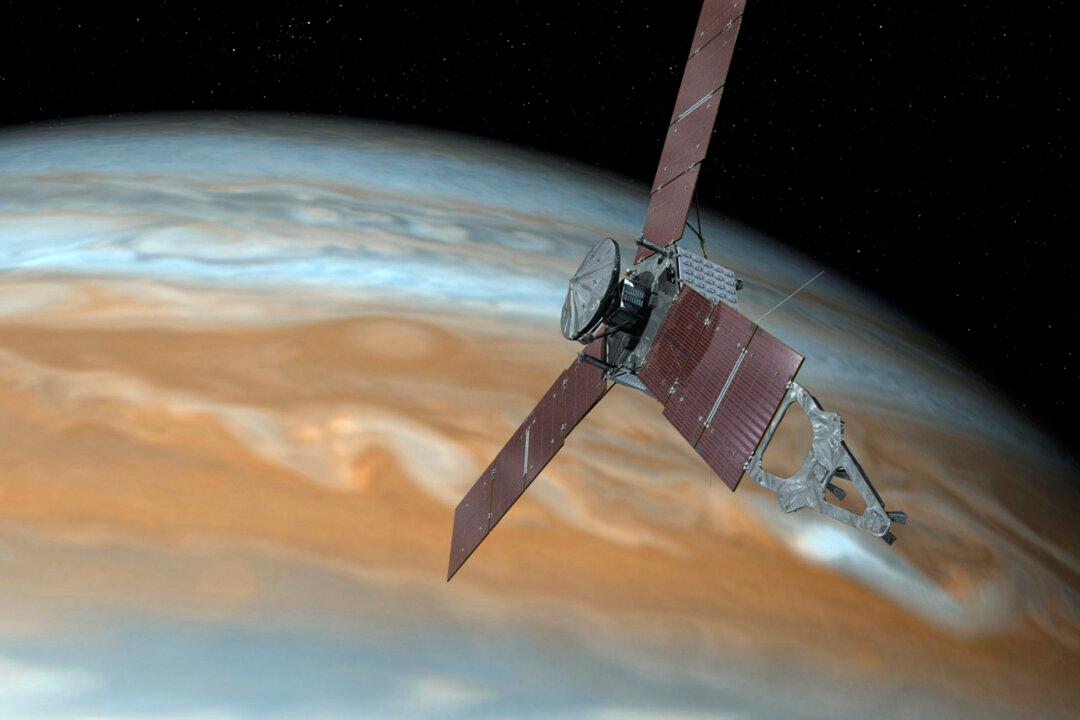CAPE CANAVERAL, Fla.—NASA’s Juno spacecraft has made the closest approach to Jupiter’s tantalizing, icy moon Europa in more than 20 years.
Juno on Thursday zipped within approximately 219 miles (352 kilometers) of Europa, thought to have an ocean flowing beneath its thick frozen crust, raising the possibility of underwater life. Scientists hailed the flyby as a success, with four pictures beamed down and released within several hours.





